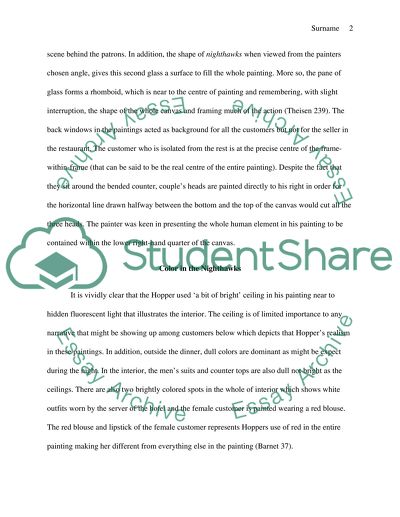Cite this document
(“Nighthawks by Edward Hopper Research Paper Example | Topics and Well Written Essays - 2000 words”, n.d.)
Retrieved from https://studentshare.org/english/1447810-research-paper-on-paintings
Retrieved from https://studentshare.org/english/1447810-research-paper-on-paintings
(Nighthawks by Edward Hopper Research Paper Example | Topics and Well Written Essays - 2000 Words)
https://studentshare.org/english/1447810-research-paper-on-paintings.
https://studentshare.org/english/1447810-research-paper-on-paintings.
“Nighthawks by Edward Hopper Research Paper Example | Topics and Well Written Essays - 2000 Words”, n.d. https://studentshare.org/english/1447810-research-paper-on-paintings.


